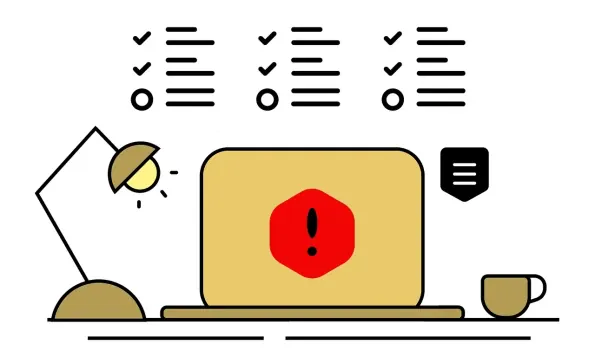The manufacturing sector is facing an unprecedented surge in ransomware attacks, posing significant risks to operational technology (OT) systems and industrial processes. The interconnectedness of IT and OT systems has made these environments particularly vulnerable, leading to cascading disruptions when either system is compromised. This article delves into the evolving landscape of ransomware threats targeting the manufacturing sector, highlighting key trends, emerging threat actors, and effective mitigation strategies.
The Interconnectedness of IT and OT Systems
Vulnerabilities in Integrated Systems
The integration of IT and OT systems in manufacturing environments has created a complex web of interdependencies. While this interconnectedness enhances operational efficiency, it also introduces new vulnerabilities. Cybercriminals exploit these vulnerabilities to launch ransomware attacks, which can disrupt both IT and OT systems, leading to significant operational downtime and financial losses. Such vulnerabilities can often go unnoticed until a threat actor takes advantage of them, demonstrating the necessity for continuous monitoring and assessment of security postures.
One key vulnerability lies in the inconsistent security protocols between IT and OT systems. IT systems typically have robust security measures due to the sensitive nature of the data they handle. However, OT systems, often being older and less frequently updated, can lack similar protections. This discrepancy provides an entry point for cybercriminals, who can infiltrate one system and move laterally into the other. With this interconnectedness, a single breach can compromise entire industrial operations, stressing the importance of harmonized security practices across IT and OT systems.
Cascading Disruptions
When ransomware infiltrates an IT system, it can quickly spread to OT systems, causing widespread disruptions. For instance, a compromised IT network can lead to the shutdown of critical manufacturing processes, halting production lines and affecting supply chains. The cascading effect of such disruptions underscores the need for robust cybersecurity measures to protect both IT and OT systems. Production halts can result in not only financial losses but also damage to reputation and fulfillment capabilities, affecting a company’s market position and customer trust.
The interconnected nature of modern manufacturing means that an attack on one part of the network can ripple across multiple areas. This cascading disruption extends beyond immediate manufacturing processes, impacting logistics, procurement, and even downstream clients and customers. The downtime caused by these disruptions can be extensive, making it imperative for manufacturers to invest in comprehensive incident response strategies. Such strategies should include offline backups, regular security audits, and employee training to recognize and mitigate potential threats.
Emerging Threat Actors
New Ransomware Groups
The third quarter of 2024 witnessed the emergence of new ransomware groups such as Fog, Helldown, and RansomHub. These groups have demonstrated high-level sophistication in their attacks, targeting industries with low tolerance for downtime. Their adaptability and persistence make them formidable adversaries for the manufacturing sector. These groups often utilize advanced techniques such as exploiting zero-day vulnerabilities and using specially designed malware to bypass traditional defenses, making it challenging for even well-prepared organizations to fend off attacks.
Fog, Helldown, and RansomHub have shown a keen understanding of the industrial sector’s vulnerabilities and operational priorities. Their tactics often involve extended reconnaissance phases to identify critical points of failure and high-value targets within a company’s network. Once inside, they deploy ransomware payloads with precision, ensuring maximum disruption and increasing the likelihood that companies will pay ransoms quickly to restore operations. As these groups continue to evolve, it becomes crucial for industrial sectors to stay ahead by employing advanced threat detection and response mechanisms.
Targeting High-Stakes Environments
These new threat actors specifically target high-stakes environments where operational disruptions can have severe consequences. By focusing on industries that cannot afford prolonged downtime, they increase the likelihood of ransom payments. This strategy has proven effective, as many manufacturing companies have been forced to pay ransoms to resume operations quickly. Such high-stakes environments often include essential production lines, critical infrastructure, and supply chain hubs, where even a brief interruption can lead to substantial financial and operational repercussions.
By selecting targets carefully, these ransomware groups maximize their potential payouts, banking on the critical need for companies to minimize downtime. They often target sectors such as food and beverage, automotive, and technology manufacturing, where the implications of halted operations can be particularly severe. This targeted approach necessitates that companies in these high-stakes environments adopt aggressive preventive measures, including comprehensive endpoint protection, regular system updates, and thorough vulnerability management practices.
Geopolitical Influences
Rising Geopolitical Tensions
The manufacturing sector is currently grappling with an alarming rise in ransomware attacks, which present substantial dangers to operational technology (OT) systems and industrial processes. The integration of IT and OT systems has created a new level of vulnerability, causing widespread disruptions when either system is attacked.
This article thoroughly explores the shifting landscape of ransomware threats targeting manufacturing, underlining significant trends and identifying new threat actors emerging in the space. Cybercriminals have increasingly set their sights on manufacturing operations due to the high stakes involved, such as halted production lines and compromised product quality. These attacks not only cause financial loss but also jeopardize safety and compliance.
In response, companies are developing and implementing more robust cybersecurity strategies specifically tailored to their unique needs. Effective mitigation strategies include enhancing network segmentation, regular system backups, employee training on phishing, and timely software updates. By adopting a proactive approach and fostering a culture of cybersecurity awareness, manufacturing firms can better safeguard their critical operations from potentially crippling ransomware threats. This concerted effort is essential to maintaining the integrity and continuity of manufacturing processes in an increasingly digitalized world.













